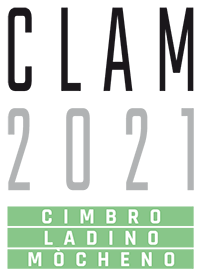
The Mother Tongue
24 May 2022
Among the Cimbrians: New Speakers
9 February 2023Benefits of early bilingualism
Acquiring bilingualism from early childhood offers many benefits for those naturally exposed to two (and sometimes even three) languages from an early age. The transmission of two or three languages within a multilingual household gives children an excellent opportunity to learn them gradually and effortlessly.
Bilingualism in the family in Ladin-speaking areas
In linguistic minority areas, where a minority language, the national language, and other varieties are present, early bilingualism is encouraged when the local language is spoken in families—particularly or alongside another language—by parents with their children and vice versa.
The outcomes observed in the examined municipalities demonstrate a wide-ranging pattern: in all Val Badia municipalities, the percentage of those using (or have used) Ladin with their mother, father, and children is very high (from 78% to 96%, with no significant differences observed among the various interlocutors); Val Gardena shows a variation from 50% to 79%; the percentages of parents using Ladin are slightly higher in Val di Fassa, ranging from 61% to 85%, while the municipality of Pozza di Fassa stands out with a sharp increase in the use of Ladin with children (98%); significant differences are also noted in the Ladin municipalities of Veneto, with the usage of Ladin among various interlocutors (mother, father, children) ranging from 44% (Ampezzo) to 87% (Livinallongo).
Bilingualism in the family in areas of linguistic minorities with German origin
It is surprising that the ranges of language usage percentages among parents and children exhibit similarity in the Venetan Ladin and Mòcheno communities: in this case as well ,the high percentages in Palù where the Cultural Institute is located), with 90% of persons declaring that they speak Mòcheno with their mother, contrast remarkably with the other two municipalities (where the percentages are around 41% and 46%).
Finally, in Luserna the use of Cimbrian with both parents and children is declared to be approximately 60% 60%, whereas residents living outside the municipality report using Cimbrian with their parents at percentages of 44% and 46%; a significant decrease to 28% is observed in the language use with children among non-residents.
Patrizia Cordin





